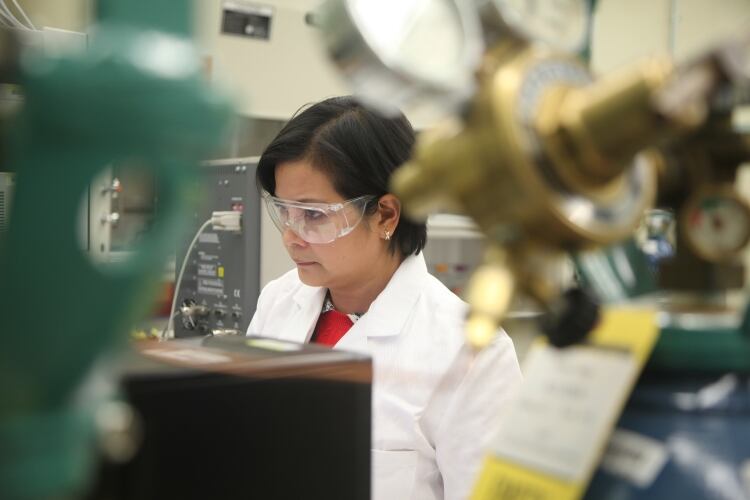The expansion of the library will help scientists identify the unknown compounds in their own milk samples. The researchers published their new findings in Analytical Chemistry.
The composition of milk varies from mother to mother, but in general human milk contains 87% water and 13% nutrients, including fats, proteins and carbohydrates. Milk researchers often focus on a type of carbohydrate, oligosaccharides, one of the many different sugars in milk. These sugars are known to have a biological effect, such as providing energy for growing babies or contributing to organ development.
“Babies cannot chew or swallow solid food, so they are highly dependent on milk for growth. It’s a miracle compound,” NIST chemist Connie Remoroza said.
One of the main reasons scientists analyze oligosaccharides is because if they can determine what oligosaccharides are present, they can begin to understand how oligosaccharides affect cells, tissues and biological processes.
The first version of the human milk oligosaccharide (HMO) library, released in 2018, consisted of 74 oligosaccharides. To build it, Remoroza and her colleagues analyzed components in a milk sample from NIST Standard Reference Material (SRM) 1953. They used liquid chromatography to separate the sample into its components and mass spectrometry to create chemical fingerprints, or mass spectra.
The team then compared those unknown spectra against a database of 1.3m spectra of 31,000 compounds called the NIST Tandem Mass Spectral Library. It’s part of the larger NIST Mass Spectral Library, which was updated recently in a new version called NIST20.
The team identified an additional 80 new oligosaccharides, bringing the total to 154. The new HMO library also used milk samples from SRM 1954, Organic Contaminants in Fortified Human Milk.
Researchers were also able to identify new compounds that had never been reported in milk before, such as one type of oligosaccharide that contained 15 monosaccharide units.
“Many oligosaccharides are now known because of improved sensitivity of the mass spectrometers, combined with NIST search software,” Remoroza said.
Once the unknown compounds are identified, they are included in the milk library.
Aside from human milk, Remoroza and her colleagues have also expanded the coverage of other types of mammalian milk. They analyzed four different nonhuman samples thanks to collaborations with the Smithsonian’s National Zoo and Conservation Biology Institute and the Philippine Carabao Center.
The Smithsonian provided an African lion sample, and the Philippine Carabao Center provided milk from a Saanen goat and Asian water buffalo. Bovine (cow) milk samples came from NIST’s SRMs 1549a and 1849a. The NIST researchers identified 90 oligosaccharides from these samples, 25 of which were also found in human milk.
Prior research has been done on these animal samples, but relatively few oligosaccharides were reported. Thanks to the development of new instruments, better methods for isolating oligosaccharides, and the new HMO library, scientists can now identify more oligosaccharides in their samples.
“Many researchers will hopefully be able to find NIST milk mass spectral library useful for analyzing their samples,” Remoroza said.
The milk library is especially useful to infant formula manufacturers.
“Scientists are interested in identifying the oligosaccharides in milk because they want to determine if these can be added to infant formula so babies can now get the essential nutrients,” Remoroza said.
Concepion Africano Remoroza, Yuxue Liang, Tytus D. Mak, Yuri Mirokhin, Sergey L. Sheetlin, Xiaoyu Yang, Joice V. San Andres, Michael L. Power and Stephen E. Stein.
Increasing the Coverage of a Mass Spectral Library of Milk Oligosaccharides using a Hybrid-Search-Based Bootstrapping Method and Milks from a Wide Variety of Mammals.
Analytical Chemistry. July 8, 2020.
DOI: 10.1021/acs.analchem.0c00342

